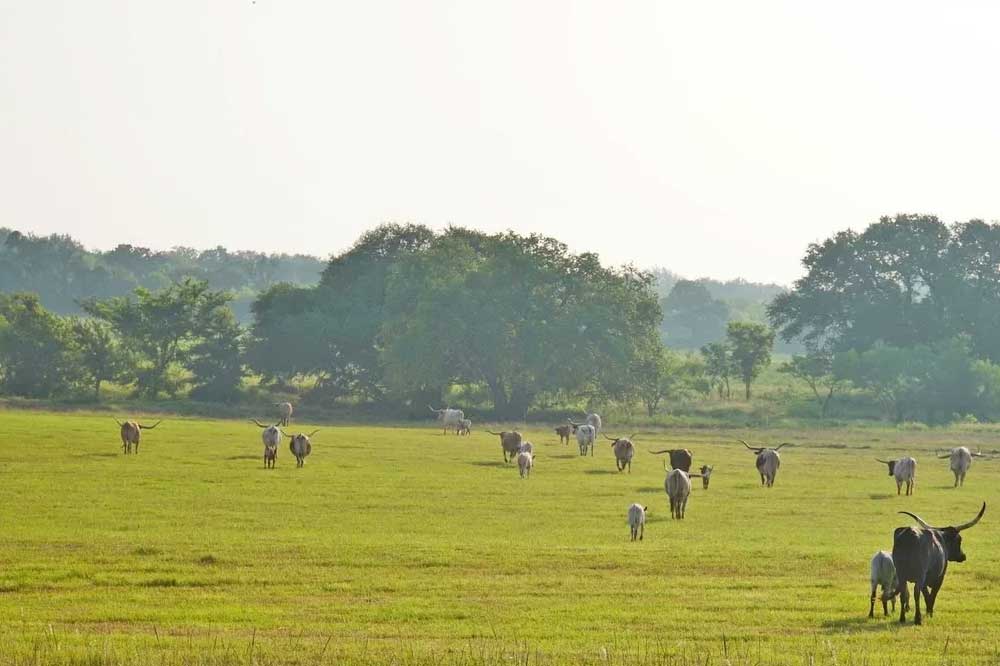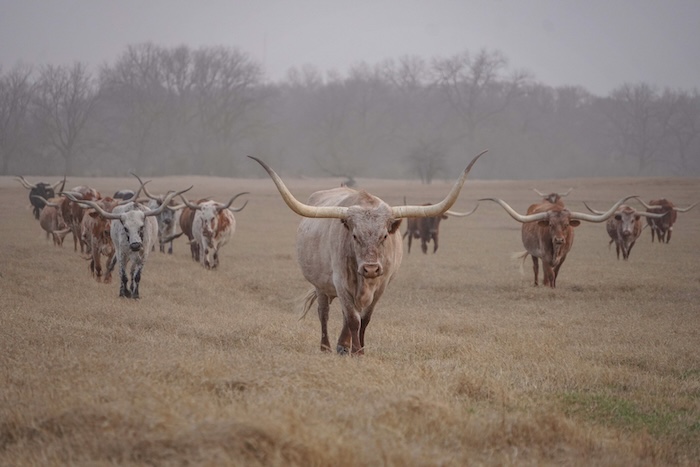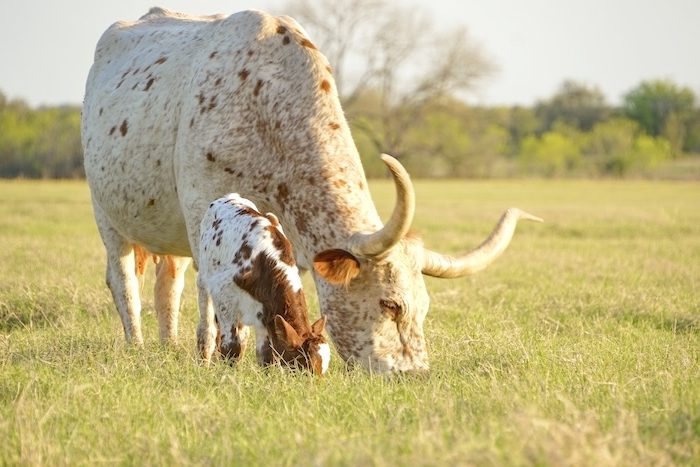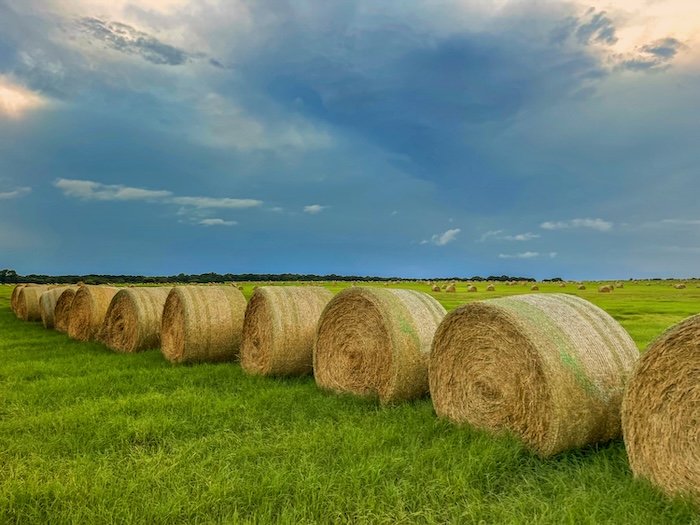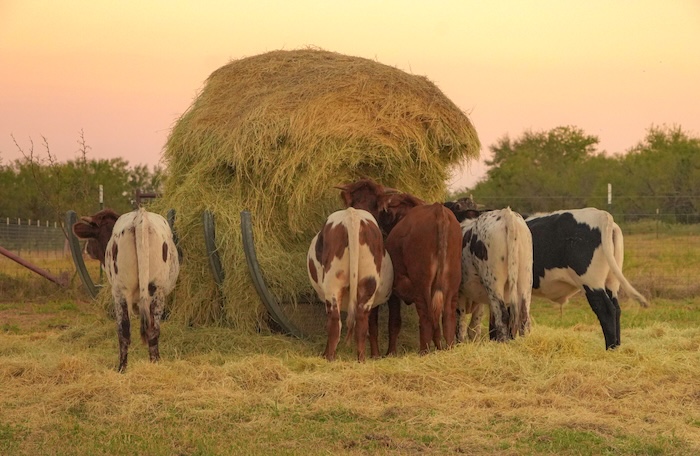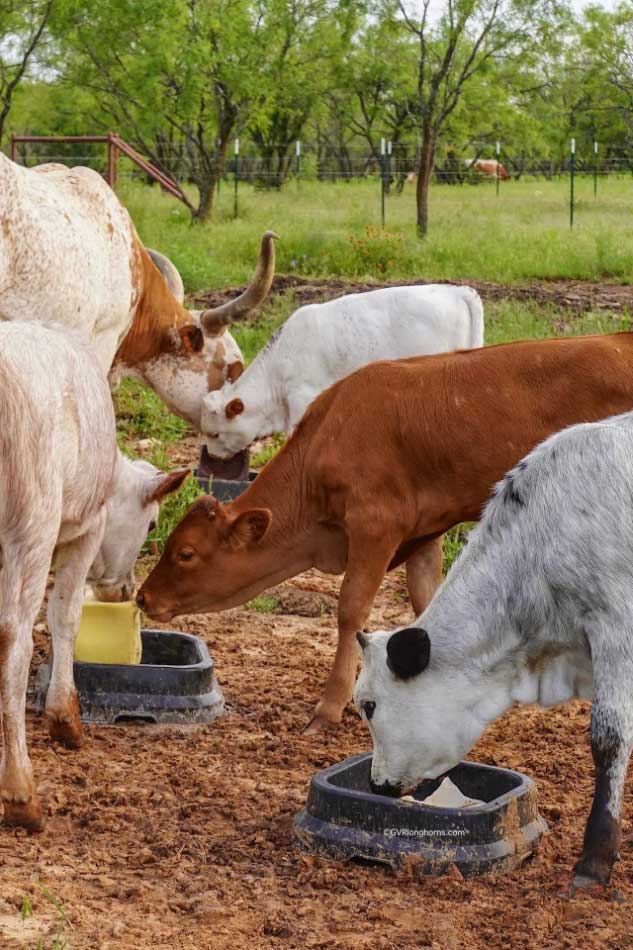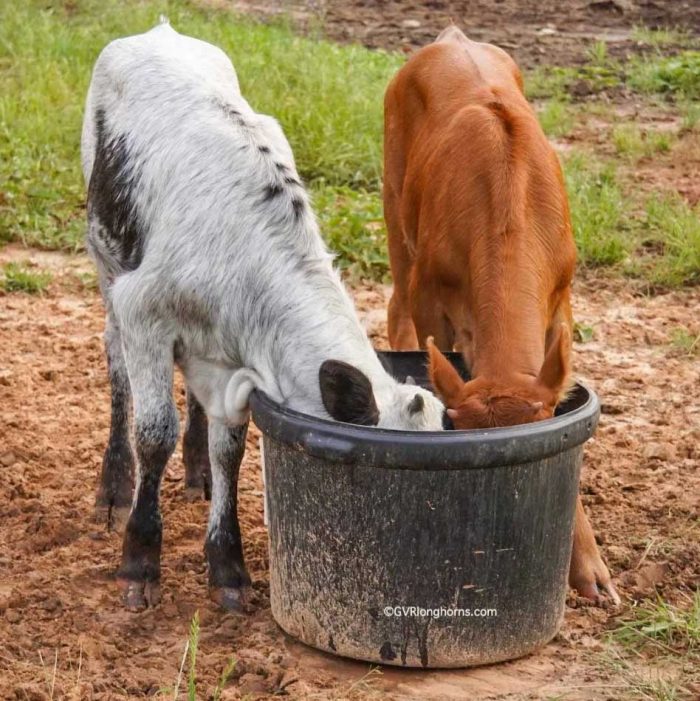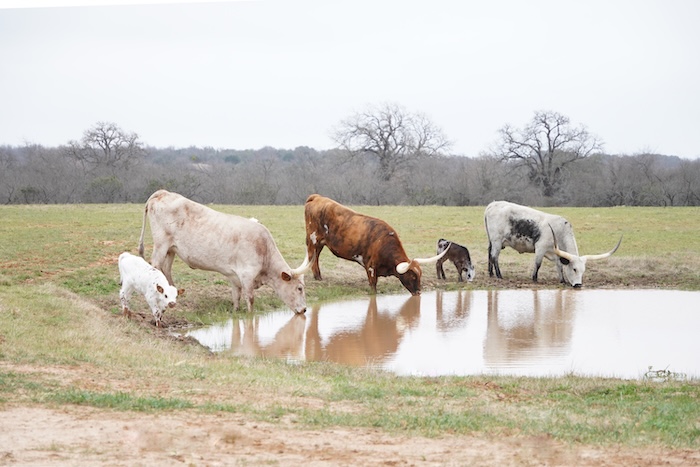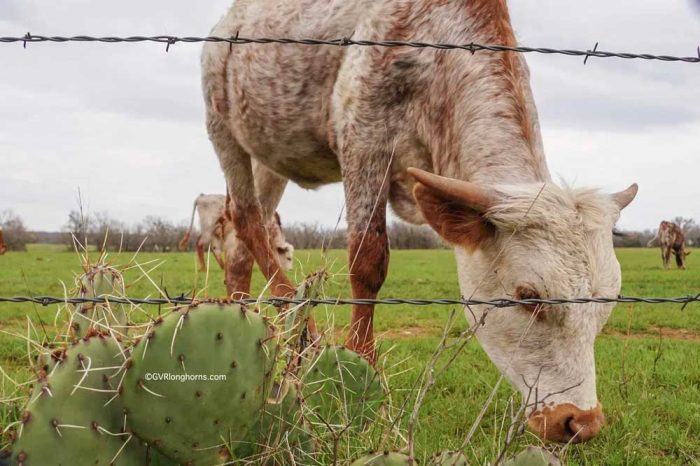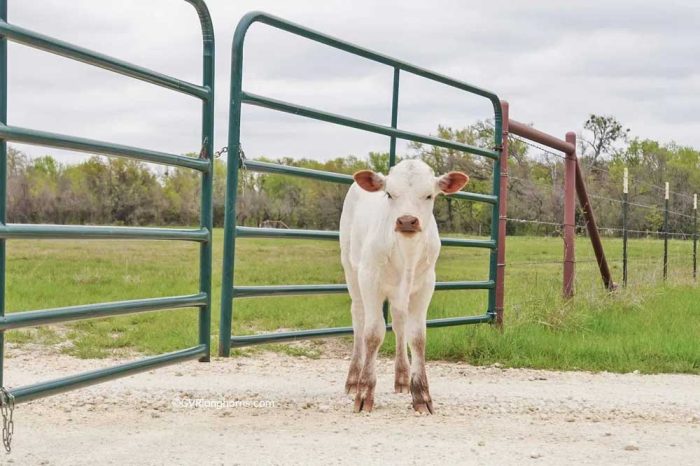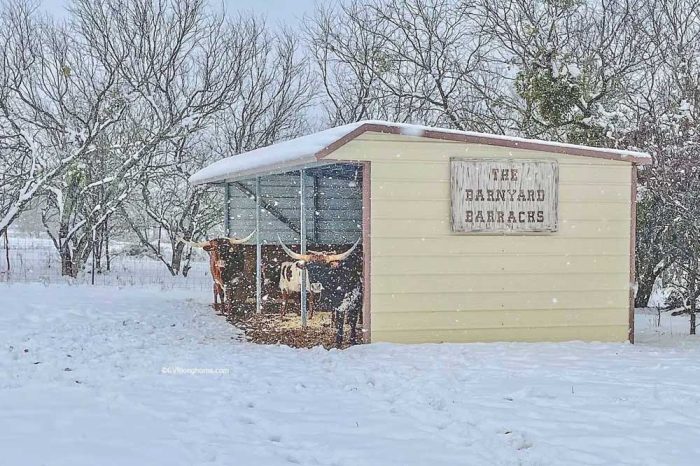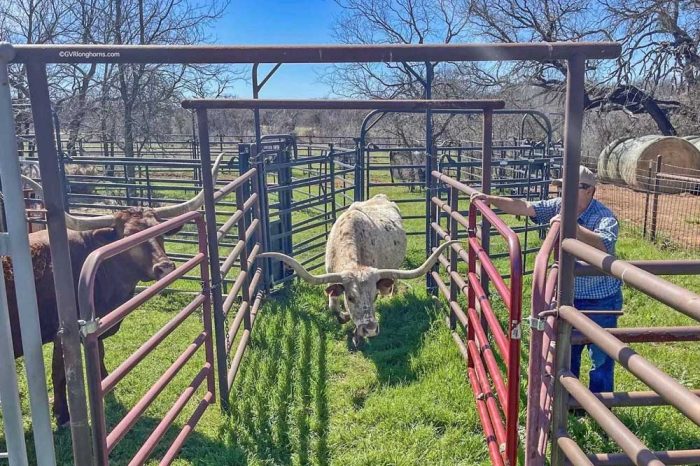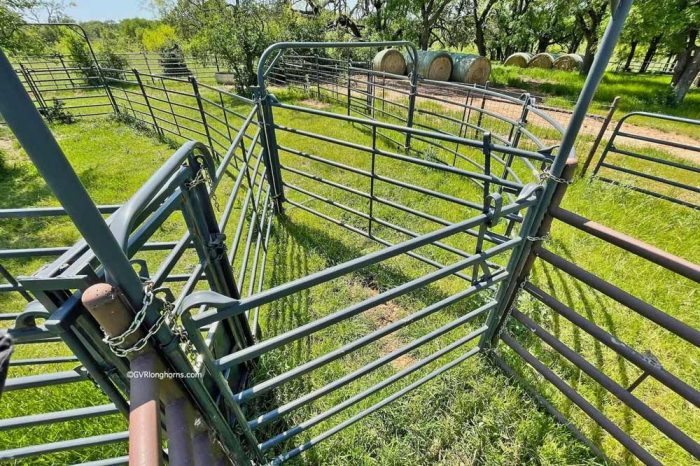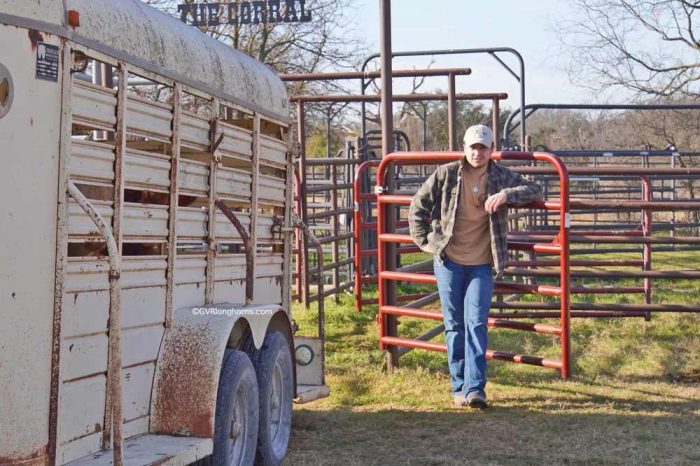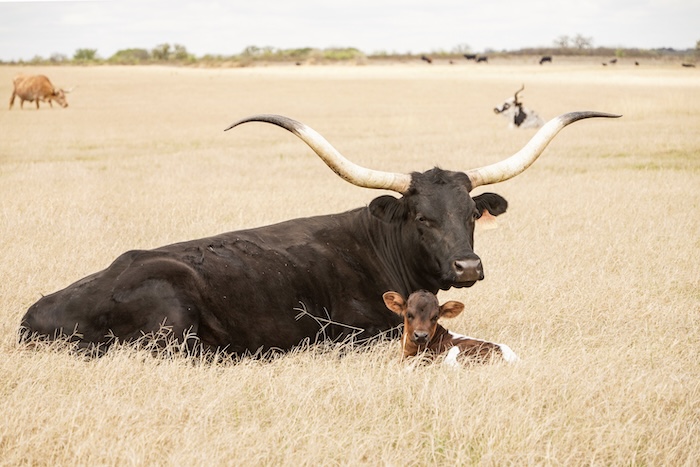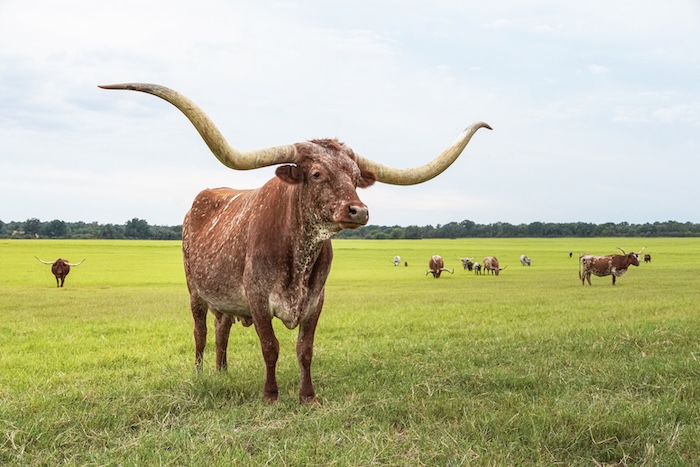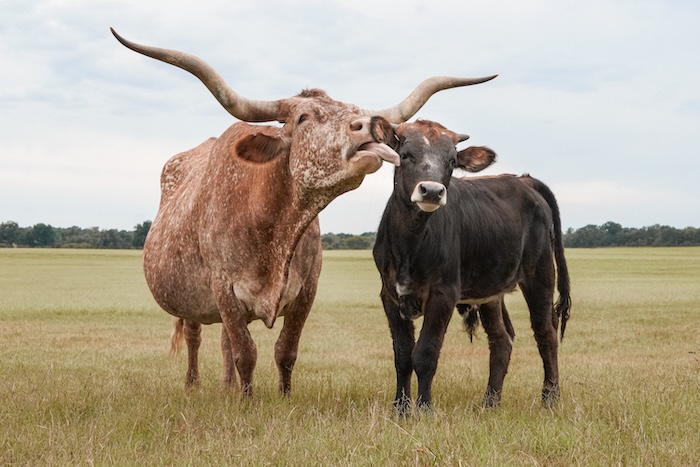Choosing your Texas longhorn cattle, preparing your acreage, and long-term planning – 16 easy, cost-saving tips for Texas longhorn cattle ranchers you don’t want to miss.
Although we have owned Green Valley Ranch for 20 years plus, this is not our primary business, and not our first experience hanging out on beautiful acreage in the middle of nowhere, or at least, a fair distance from a main city. In fact, Paul was born on a farm and helped his dad with everything agricultural since he can remember. This is also not our first endeavor with heritage breeds, as explained in our very first blog post ( An Intro…..)
Nonetheless, we are the first to say that we don’t know everything there is to know about Texas longhorn cattle and ranching in Texas. On the contrary, we learn something new every day.
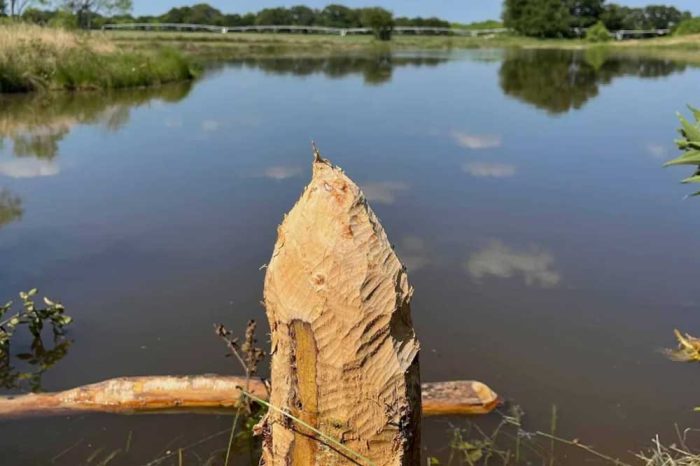
On a serious note, we have learned a ton over the years through trial and error, and not without some costly mistakes.
6 Tips Before You Bring Your Texas longhorn calf home was published in June 2020 and still gets a lot of attention. We posted in that blog that our way works for us and may not work for you. But, rather than learn costly lessons from your own mistakes, we have provided a breakdown based on our own Texas longhorn experiences.
Subsequently, we have had some interesting and thought-provoking conversations with new and seasoned Texas longhorn cattle owners, mainly around cost-saving options. Referencing these discussions, we have expanded on our original blog post.
Visit our Salebarn
Here are two important factors to consider
A. Agricultural Tax Exemption requirements
Agricultural Tax Exemption Requirements differ from county to county in Texas. To retain or acquire an Agricultural Tax Exemption, you will need to determine the requirements for your area. Fulfilling the requirements of an Agricultural Exemption will save you on taxes. For more details on Agricultural Tax Exemptions – see our article: Texas Longhorn Cattle – the sensible solootion to Ag Exemption
B. The Stocking Rate
Stocking Rates are specified in terms of Animal Units (AU). One 1000lb Texas longhorn cow with or without her longhorn calf under 6 months of age would be considered one AU.
The Stocking Rate is how many Texas longhorn cattle your land can actually support in a specified period of time. It varies relative to soil conditions and is dependent on
- Where in Texas is your acreage?
- What type of pastures do you have?
GVRlonghorns at Green Valley Ranch is in Erath County. Our County Extension Agent suggests that even within our County, soil conditions vary. Nonetheless, as a starting point and broad guideline in our County, the following stocking rates may be applied for one animal unit (AU) as follows:-
- Managed/improved pastures = 2-6 acres
- Native grasslands = 15-20 acres
- Woodlands = 50-75 acres
Call your local Texas Ag extension office for specific advice in your area
2. How much feed will my pastures produce throughout the year?
We all know that cattle ranching is important in Texas. Therefore, there is always the chance that your neighbor who is raising cattle is doing so on a ranch that has been in the family since the Civil War. If this scenario is true for you, ask your neighbor this question. If not, here are some factors to consider.
- How many Animal Units can my pasture(s) support? The technical term for this is the Carrying Capacity which refers to the amount of forage available to your Texas longhorn cattle for grazing year after year. This estimate varies depending on the quality/ nutritional value of the forage in a given year. The Carrying Capacity in a pasture will change if a different forage is planted. It will also vary in adverse weather conditions. Grass, hay, and soil samples can be analyzed to determine their nutritional value.
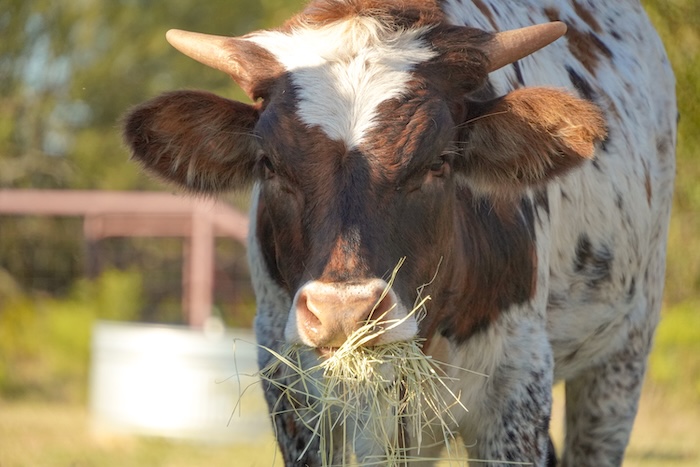
- How much does a longhorn eat? It’s good to know ahead of time how much forage your pasture has. It’s also good to know ahead of time how much forage your longhorns actually need from one day to the next. The average Animal Unit is estimated to consume between 2% and 3% of its body weight. A lactating cow will eat more, and a bull will consume the most. Ensuring your cattle herd has sufficient forage can be pricy, so understanding these costs and planning for them ahead of time is a necessary factor in balancing your budget and in maintaining a herd’s health throughout the year. A considerable benefit of Texas longhorn cattle is that they are not picky eaters. They browse and graze simultaneously.
Understanding the Carrying Capacity, how many animal units your pasture can support, will save you in the long run.
According to
According to the Texas Landowners Association, one should work on the presumption that only one quarter of a pasture will be consumed. This portion of the pasture is referred to as the Utilization Rate (forage to be consumed). It is calculated based on the presumption that just like we sometimes leave food on our plates, cattle are wasteful too, and they take food wastage to a different level. They sleep on it, manure it, and simply don’t eat some of it. Further, in order to prevent overgrazing, it is good pasture management practice to leave half the forage on the ground.
In fact, overgrazing can happen easily if your pastures don’t have enough growth, even if you follow the stocking rates.
Applying the principle “forage half and leave half ( ungrazed )” is a good tip to help ensure next year’s pasture growth. (Larry D. White and Allan McGinty)
HELPFUL LINKS
TEXAS AGRILIFE EXTENSION OFFICE LOCATOR
3. Source your hay without delay!
No matter where you are situated in Texas, chances are that you will need hay for some part of the year and more than likely through the winter months. Most seasoned Texas longhorn cattle ranchers will prepare for those months ahead of time. Although we bale our own hay, we also order hay in advance for delivery closer to the time that we need it. If you are new to Texas longhorn cattle ranching, here are a few tips to consider.
- Find out ahead of time where your closest resources are.
- What type of forage is available? We stick to coastal, but have used other grasses in the past, too.
- Fertilized hay holds more nutritional value.
- How long in advance the hay was cut, how it is wrapped, and how it has been stored affect quality.
- As with most things, size matters. Round bales vary in size. Comparing prices when you know the size of a bale can make a huge difference, bearing in mind that the circumference of a circle grows significantly as the circle gets bigger.
- Hay can be difficult to find at short notice, especially when there is a shortage of hay. Prices also often go up based on supply and demand. Here is more information on Feeding Texas Longhorn cattle during drought periods, 3 challenges
If round bales are what you need and you don’t have the equipment to collect or move them, assess delivery costs ahead of time. Consider access for hay delivery and hay storage, as hay can’t stay in the same enclosure as your longhorns, or it can, but it won’t last. Delivery in bulk will surely reduce costs, but hay left standing without cover can result in damage.
As a cautionary note, please remember to remove hay wrappings and to discard the removed wrappings out of reach of your Texas longhorn cattle.
HELPFUL LINK
Balancing your animals with your forage
Forage for Texas Longhorn Cattle during a drought: 3 Challenges
4. Don’t forget the supplements
Texas longhorn cattle, like other bovine breeds, extract protein and energy from their forage. How much of each they ingest depends on a number of factors. The quality of the forage is a major factor and tends to peak in the spring. The size of the animal and its productive state are two other factors to consider. As an example a lactating cow in the fall will require more protein than a young cow in the spring and will therefore require additional protein supplements. Generally speaking , a cow with a fall calf would therefore be more expensive to maintain in good health than a cow who calves in the spring.
A balanced nutritional program is key to health and productivity. Most research of mineral supplements has been carried out on different breeds other than Texas longhorn cattle and although there is recognition that different breeds may require a different balance, we have more information today than ever. According to Agrilife Extension most problems in Texas are related to copper as well as zinc and selenium. Your local Extension Office is a resource for information and soil testing. See helpful links above for your county office locator.
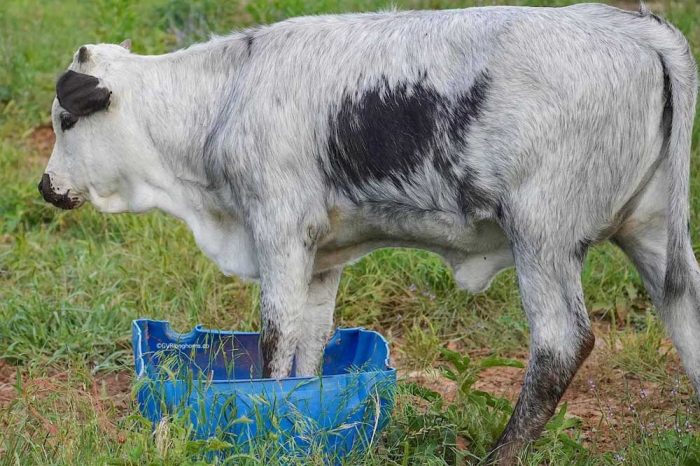
HELPFUL LINK
https://agrilifeextension.tamu.edu/library/ranching/mineral-supplementation-of-beef-cows-in-texas/
5. Is water accessible to your longhorns year-round?
Texas longhorn cattle require water daily to survive. If you are lucky enough to have a natural creek running through your cattle ranch, you may have access to a natural source of water in your pastures. The problem is that creeks often break their banks in the summer rainfall season, causing washaways of fencing and water gaps, and low-lying pastures. In the late summer months and during drought periods, creeks run dry, and in winter, they freeze over.
Texas longhorn cattle, as well as their calves, are sturdy on their feet and have no problems steering through creek bottoms, even if the creek beds are rocky. Nonetheless, each season has its obstacles. Stock tanks or ponds are a good option to ensure water, but unless your tank is sufficiently deep, it too can face the risk of running dry. In severe winter weather, a stock tank can freeze over. Ours did during the Polar Vortex of Feb 2021. (read the full story here) We decided to move our herd away from the icy tank for fear of them walking on the ice, breaking it, and falling into the icy water.
HELPFUL LINKS
7 Points to PONDer when Building a Stock Tank
How to ensure your Texas Longhorn Cattle have water all year round.
6. How adequate are my fences?
Did you know that Texas is an ‘Open Range‘ state according to Common Law? However, there are many Stock Laws in existence that override this Common Law, and consequently, there are numerous exceptions to this rule.
Generally, it is in everyone’s best interests to ensure your boundary fences are secure.
There are many fencing materials cattle ranchers use to secure their Texas longhorn cattle.
We use a range of materials depending on our objectives in different areas.
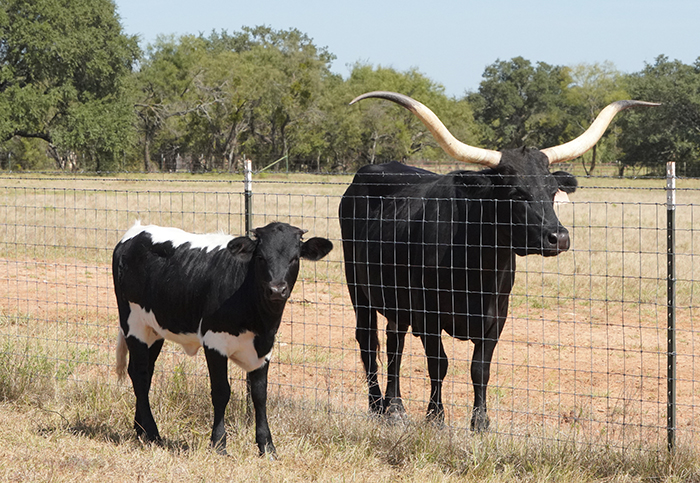
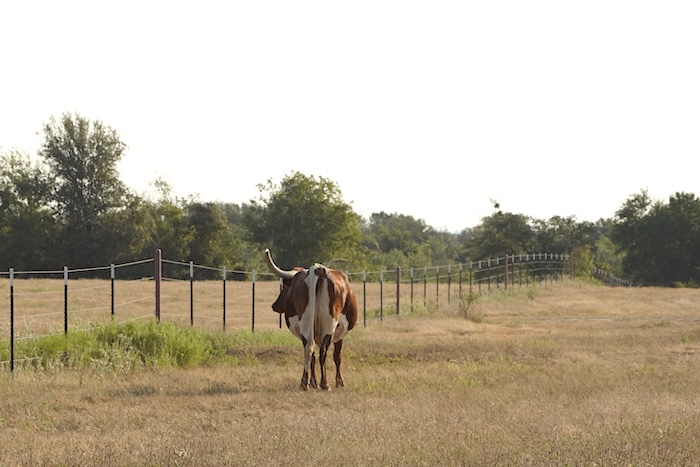
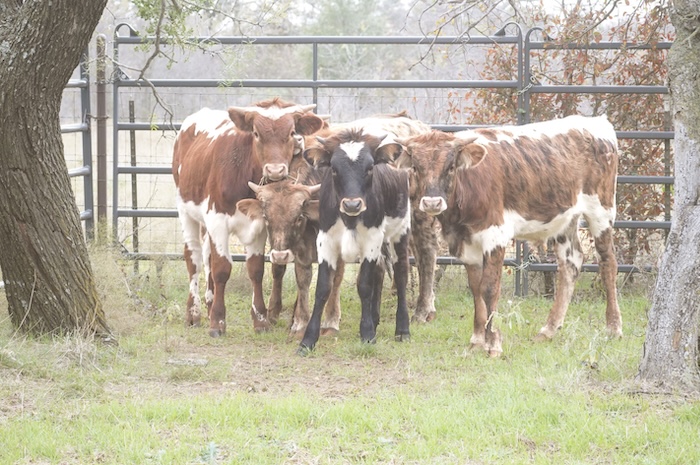
Up until now, we have not electrified our fences. We do, however, maintain our fences to ensure our cattle stay on our property in their specified pastures and other cattle stay out. Many of our fences span over creeks, and it’s these areas that often require more attention than other perimeters.
7. Is the entrance to my pasture accessible?
To avoid costly fence reconstructions….
Before securing a perimeter, here are a couple of tips to consider.
- The entrance to your pasture should be easily accessible. This may sound simplistic, but we have moved many an entry. Most times, practicality wins over aesthetics. Consider large equipment even if you don’t own it.
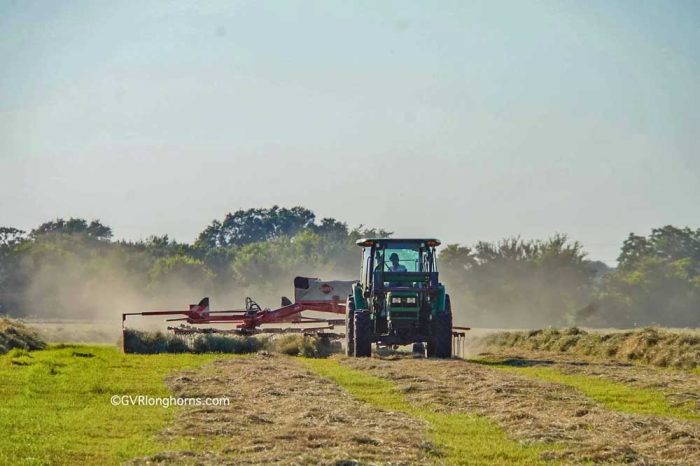
- If rainwater pools around gates, roads, or entryways, an entrance to a pasture could become inaccessible and may need to be moved. Again, this may sound like a no-brainer! However, it does not rain an awful lot in Texas and roads and entrances are often planned in dry weather. But we also know that when it rains, it usually pours. Waterlogged paths can turn to mud in a flash, making it difficult to reach your animals.
8. Are my gates wide enough?
Gates should be wide enough for farm equipment, whether you are handling hay and managing your pasture yourself or whether you have contractors lined up. We prefer 16′ to 20′ gates.
9. What about shelter for Texas Longhorns?
If you have wooded areas and trees with shelter canopies that can break the wind and protect from the rain, heat, and cold, your Texas longhorn cattle will be happy.
For added protection, they do appreciate covered sheds and will use them, but sheds are not essential.
10. Is a corral really necessary?
It is true, not every Texas longhorn cow is like Blackie Bloo, who will let you do anything to her, any time, even in the middle of the pasture.
In reality, unless trained, most Texas longhorn cattle, and even their longhorn calves, are difficult to restrain in a pasture. Texas longhorn cattle are more resilient than most other cattle breeds but they do get sick and sometimes do need attention. It is certainly easier to handle Texas longhorn cattle in a smaller area. Chutes specifically designed for Texas longhorn cattle are expensive. The costs of these chutes are difficult to justify for a few longhorn cattle. When we first started with our Texas longhorn herd we used this tub system with portable panels that we attached on a semi permanent basis. It’s not ideal but it did serve its purpose.
Our corral looks quite different now to what it did years ago but we still use the tub to funnel our longhorns into the chute. It was certainly a worthwhile investment.
11. Where is the nearest Veterinary Clinic?
Texas longhorn cattle are hardy. As long as they are well nourished and have water they are generally easy to take care of. But they do get sick and even if they don’t it’s important to familiarize yourself with a facility that would be able to care for your Texas longhorn in an emergency situation or if your longhorn feels bad.
Some Veterinary Doctors will come to you but not all make the trip to your ranch and not all clinics are set up to take in a bovine patient.
12. Do I really need a trailer?
If you don’t have a Veterinary doctor in the area that is willing to make ‘house calls’ or if you don’t have a reasonable way to secure your Texas longhorn for treatment then a trailer is necessary. For shows and sales, a trailer is nice to have but haulers can be arranged in advance at a price.
13. Consider the nature of the beast.
All bovines have a herd mentality, and they speak bovine.
Consequently……..
- Texas longhorn cattle generally do not like to be on their own and will seek out like-minded company.
No matter how gentle or tame a Texas longhorn is, it is not a pet in the way that a dog or a cat is. Chances are that one longhorn alone will not be happy and seek out another herd.
- A Texas longhorn Cow is happiest with a calf by her side.
If you are not planning to breed your Texas longhorn cow, consider a steer instead, for two reasons. If you plan to keep the progeny, that’s great, but bear in mind a bull calf will have to be castrated or set in a different pasture when he is old enough to breed, so as not to breed back with his mom. In addition, it is not unheard of for a cow to go walk about for a bull and vice versa, irrespective of the fences in between.
- A Bull needs a herd of cows and more space than a steer or a cow.
In fact, Agrilife Extension suggests that it is not feasible to own a bull for fewer than 10 – 15 cows. Furthermore, bulls need more space, more feed and more sturdy fencing.

14. Hey good looking!
It gets easier to differentiate Texas longhorn cattle from each other as they grow older. Granted, their colors are a defining feature from the beginning, but even the coats they wear could change. As Texas Longhorns develop, so do their horns and body proportions. As a Texas longhorn grows into his or her horns and body, specific characteristics become more apparent. Studying the genetics of a baby longhorn calf and researching both the Dam ( mother ) and the Sire ( father ) can give clues as to how the baby will mature.
15. Purpose – What is my objective with Texas longhorn cattle?
In our Texas longhorn cattle Blog we often highlight the many reasons to be drawn to Texas longhorn cattle. For example :
15 Awesome reasons why Ranchers raise Texas Longhorn Cattle
The Secret behind the Popularity of Texas Longhorn Cattle
14 Gestures of Love and Affection the Texas Longhorn way
Texas longhorn cattle are certainly attractive to look at, and if you have the means, they are also attractive to acquire as your own. However, choosing the right longhorn for your purposes could prove to be a daunting task.
Not only do Texas longhorn cattle look different from one another, but they also develop unique characteristics from each other. Furthermore, within the Texas longhorn industry, certain of these characteristics are emphasized more than others. To make it more confusing, prices fluctuate as we highlighted in our article How Much do Texas Longhorn Cattle Cost?
Nonetheless, if your goal is to purchase a Texas longhorn for Agricultural Exemption as opposed to competition, you may be able to purchase a beautiful animal for considerably less than one whose parents are champions in the show arena, for example.
There are a number of other objectives to consider before choosing the type of Texas longhorn you would like to have in your pasture. Scroll down on our Advantages page to read more. We have listed 6 different objectives there.
16. Thinking ahead….
Undoubtedly, unless all your animals are steers or cows that have not been bred, your herd will grow. Texas longhorn cattle are very rewarding to own, but 5 cows will have 5 babies who very soon will reach breeding age and then have babies of their own. Before you know it, you will have a larger Texas longhorn herd than your land can sustain unless you have anticipated how you will keep the numbers controlled as well as considered how you will go about selling your excess. Our suggestion has always been to start with less and build your herd up as you go along. Marketing is time-consuming and can be costly. It is also not always as effective as you hope it will be.
In conclusion
We are happy with everybody in our Texas longhorn herd. We are also confident that every longhorn is happy with us.
This moo-tual understanding is extremely rewarding.
We hope your experience with longhorns has the same results. If you find the above information helpful but still have concerns with regard to choosing a Texas longhorn or maintaining a herd, please feel free to reach out to us and schedule a visit to GVR Longhorns at Green Valley Ranch. We look forward to meeting with you, introducing you to our herd, and leading you through our facilities.
https://agrilifeextension.tamu.edu/library/ranching/stocking-rate-decisions/
https://agrilifeextension.tamu.edu/library/ranching/livestock-for-small-acreage-landowners/
https://landassociation.org/how-many-cows-per-acre-in-texas-get-the-stocking-rate-for-your-area/
https://www.agupdate.com/agriview/news/livestock/calculate-how-much-hay-cows-consume/article
https://www.agupdate.com/agriview/
https://landassociation.org/how-many-cows-per-acre-in-texas-get-the-stocking-rate-for-your-area/
https://agrilife.org/texasaglaw/2014/05/19/texas-fence-law-open-range-or-not-part-1/
Disclaimer: All material noted above is based on our hands- on experience as ranchers, as well as our observations of our own cattle over the years. We have done and continue to do extensive research in order to maintain our herd‘s optimum health. However, all opinions and statements made on our website are meant as guidelines only. We are not qualified statisticians/ veterinarians and urge you to consult a specialist with your concerns. Content and of this blog and all pictures belong to GVR Longhorns LLC and may not be copied in any form. ©GVRlonghorns.com All rights reserved.


